A lot of photos in this one so the email will be chopped off. Read on the website or in the app for the best experience.
After 9 hours tippity-tapping on a computer in my little cubicle, the urge not only to move but to get outside a screen is strong. I left work yesterday and had to be at a bar just off the West Side Highway in an hour. The sun was out, so I walked. Every morning and evening a vignette of pure Gotham greets me outside work.
This jumble of buildings, all facing different directions—a reminder that the Financial District is built on the oldest city streets laid out before the overarching logic of grids. Also visible are at least three architectural eras. Just out of frame in the foreground is Fraucis Tavern where George Washington said goodbye to his officers at the end of the Revolution. The big glass temple in the middle is 58 Wall Street, until recently the headquarters of Deutsche Bank, and directly to its right is the Art-Deco classic 70 Pine Street, which has one of my favorite architectural details in the city, a large stone model of itself set right above the doorway.
I cut through FiDi towards the World Trade Center, an area I don’t spend a lot of time in because it gives you little reason to visit besides the city’s most depressing museum. Recently the Pearlman Performing Arts Center opened and was promptly drooled over by architectural critics.
I appreciate that theaters are necessarily windowless buildings but the experience of being next to the Pearlman is not nice. They couldn’t even extend its textured marble down to street level to break up the monotony of walking along it (I can hear the architects saying “But the black stone creates the illusion that the building is floating”… sure). This is an issue throughout the WTC area, which is broken up into mega lots with buildings allowed to cover entire city blocks. The pedestrian is left walking down endless facades the length of a city block, without anything to look at and certainly nothing to do. No one wants to criticize the area because of, well, 9/11, but it’s just slightly better than Hudson Yards in my opinion.
In the video above you can see what I mean. Regulations are fairly lax when it comes to stuff like this and architects don’t seem to be picking up the slack. The Dept of City Planning recently published its Principals of Good Urban Design - which calls for legible entrances and variety and visual interest at ground level, but anyone is free to ignore these principles as long as they meet the city’s zoning requirements.
This building further down the street has the same street wall as the ones up the block, that is to say, it comes out to the same point on the sidewalk — but the ground floor has been hollowed out with an arcaded walkway creating a parallel pedestrian space to the sidewalk. It was being renovated at the time, but the ground floor also had shops, and… windows! The only ground floor windows for blocks and blocks. More of this, please. Even as it was being renovated the arcade had a few knots of workers on their cigarette breaks (I wrote a whole post about ground floors).
One effect of this canyon of boring buildings is that you end up being pulled toward the only thing that looks interesting, which is the river. I needed to be on the West Side anyway so I made a beeline for Battery Park along the Hudson River. In the park, I immediately clocked this very good playground animal. Its nostrils are sprinkler valves.
I thought this might be a Henry Stern production, but I’m not sure. Stern, the eccentric NYC Parks Commissioner who demanded that animal decorations be built in all new parks, might not have had jurisdiction over this particular playground. That’s because Battery Park City is actually operated by a corporation set up by New York State. When the development was proposed New York City was reaching peak disfunction. Governor Nelson Rockefeller decided that a public benefit corporation was better suited to develop and manage the area than the dirty old City of New York. This particular slice of BPC is named Rockefeller Park in his honor.
Everything in the above picture is built on reclaimed land. Debris from the foundation drilling of the Twin Towers was dumped into the river to create about 92 acres. It was interesting walking here after last week’s post on river edges - Battery Park City was built in an era unconcerned with sea level rise. When Hurricane Sandy swept through the area the river essentially returned to its boundaries pre-land reclamation. The Authority has placed these signs along the promenade with the blue line representing the high-water mark of the storm as a reminder. Scary. Large swaths of the park south of where I was are closed as crews work to floodproof them.
Past the park, I’m walking uptown along Hudson River Park. There are more joggers than non-joggers impatiently huffing by me and nearly stepping on the toes of a lady sitting on a bench. I wonder if we should build a lane for joggers, or ban jogging. Off in the distance is one of my favorite evil-looking buildings, the giant ventilation tower of the Holland Tunnel running between New York and New Jersey. This monolith apparently changes the air in the tunnel every couple of seconds with huge fans. When I was growing up this pier still had the remnants of the queer hangout that used to stretch along the waterfront and was featured prominently in Paris is Burning.
In the foreground, you can see the wooden pilings of a long-gone pier. While working on a waterfront project I learned these pilings are protected habitat. The soggy wood has become home to wood-eating worms. The worms attract fish who gather in between the wooden stalks like a little marine forest. For this reason, you can’t remove these pilings without a ton of red tape. Even in multimillion-dollar projects like Little Island, you will still see ancient pilings sticking up around the new construction.
Some signage along the Hudson River Promenade shows the critters that live amongst the pilings, including the same type of crab you can eat boiled and crusted in Old Bay throughout much of the Chesapeake Bay area.
Turning off the river I pass a ghost bike indicating a spot where cyclists have been killed by cars. There are a lot of names at this particular point. These impromptu memorials have been going since before I was born but I’ve never looked into who is behind them. The website tracking their location stopped being updated years ago.
Here’s something new, a sign indicating the start of the congestion pricing zone. In a rare act of courage, our Governor has decided to keep the tolling program going despite Trump’s demand it stop. I will never miss a chance to tell people that it. Is. Working
Next to this is a little triangle called Canal Park. It’s not much to look at today but it once hosted the city’s premier flower market.
Whenever I’m here I think of a video that swept through early YouTube of a guy going through a manhole in this park to the sewer below, apparently the oldest functioning sewer tunnel in the city. This kind of urban exploration content is fairly common now but it blew the minds of my high school friends (The Canal Park portion starts at the 11:00 mark).
North of the Park is two of our most handsome municipal buildings, the Department of Sanitation District 1/2/5 Garage and Salt Shed.
A former Director for Sanitation’s Real Estate Planning division was my studio advisor in grad school and helped guide my early career. I remember her saying that when people find out DSNY wants to build something in their neighborhood they usually freak out, imagining odors and mountains of trash. Part of mitigating this response has been to put an above-average emphasis on design (for what it’s worth, no actual trash is stored at these garages). In this case, it seems to have worked. The designer Heron Preston once released a capsule collection inspired by DSNY and chose the salt shed for its release.
The actual garage has a facade of aluminum fins set on diagonal slopes, reflecting that the building is essentially one long winding ramp that trucks drive up and down.
Gwyn Thomas says that the beauty is walking and we are betrayed by destinations. This isn’t always true, because I was on my way to the gentle embrace of the Ear Inn, one of my favorite bars. It’s easy to forget how layered and dense the world is. Rereading this before clicking send I notice how many times I’ve ended up referencing my childhood. I have not been feeling super optimistic about cities but right now there are fish-eating worms out of the remains of post-industrial piers and we’ve changed our laws and building habits to reflect this, and a garage full of trash trucks is beautiful.


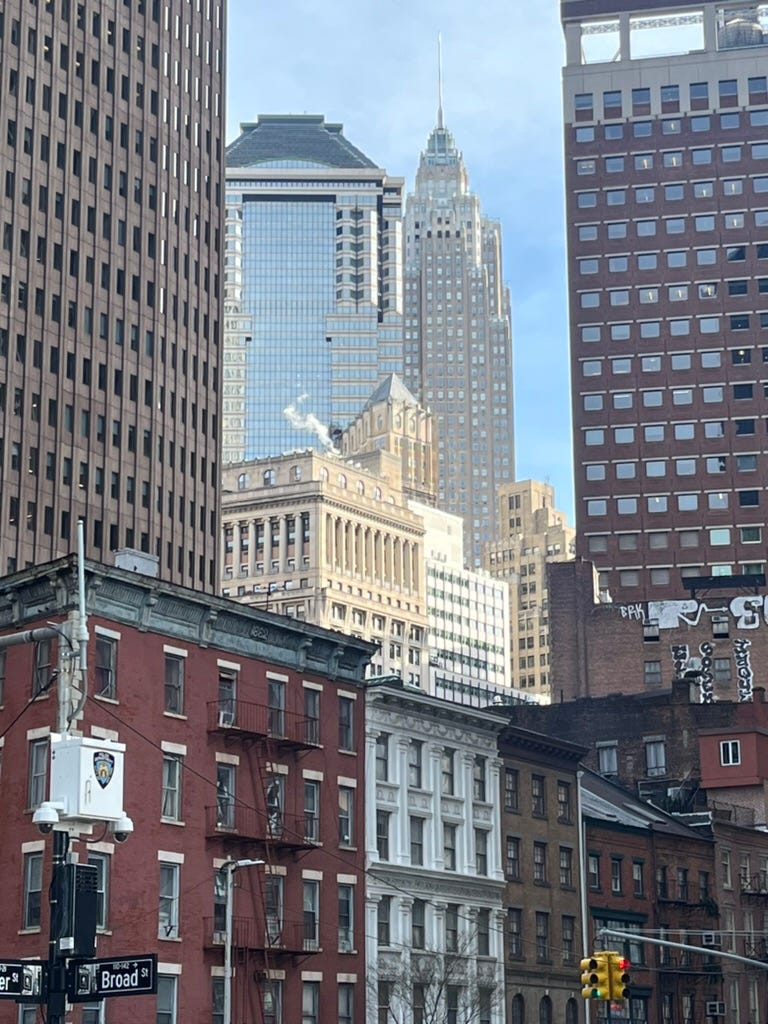


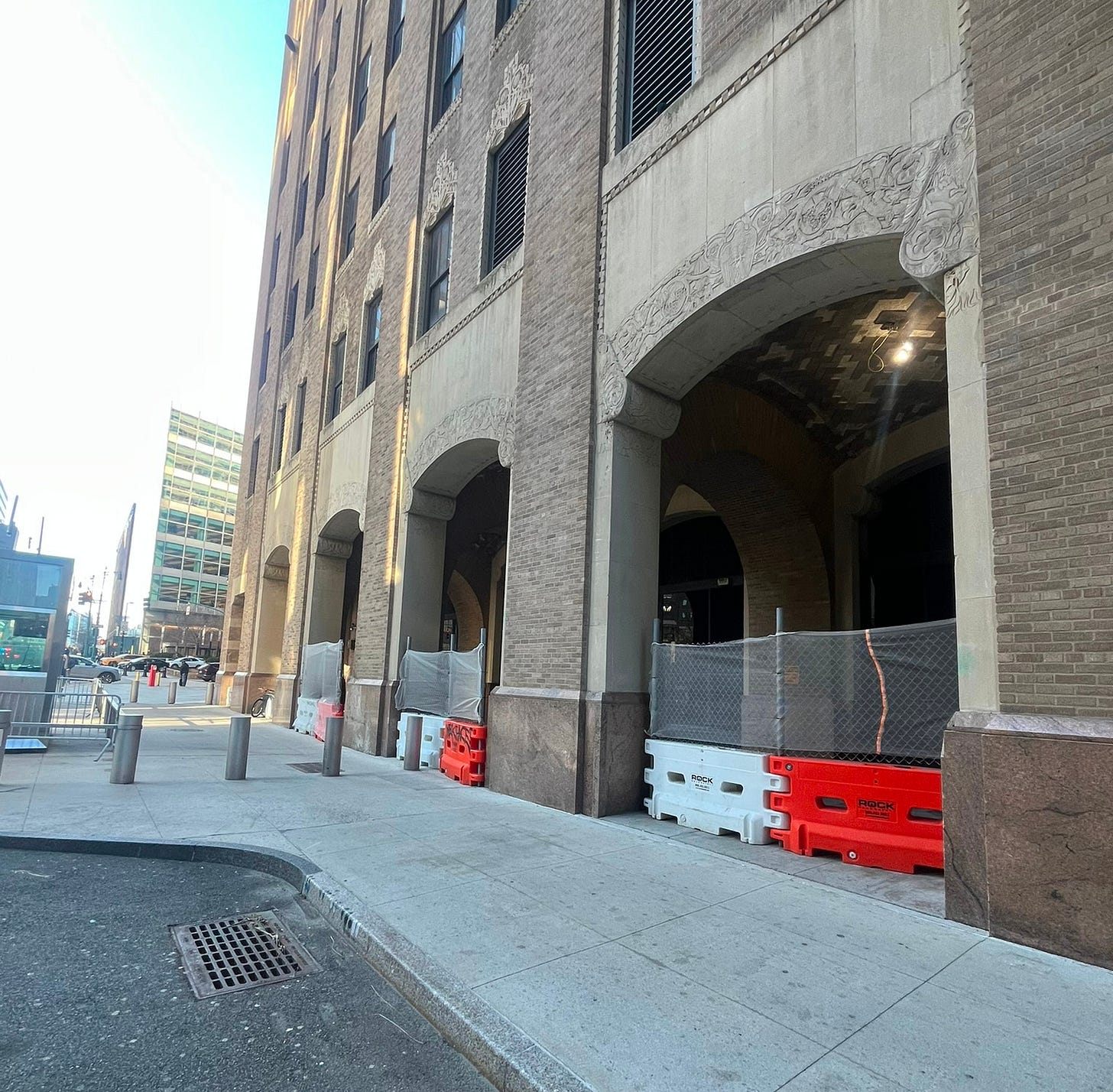
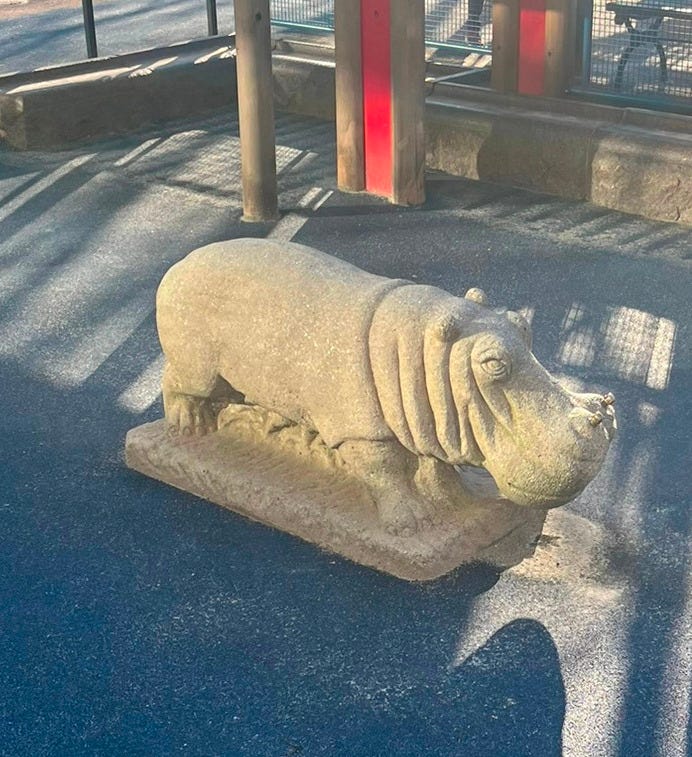
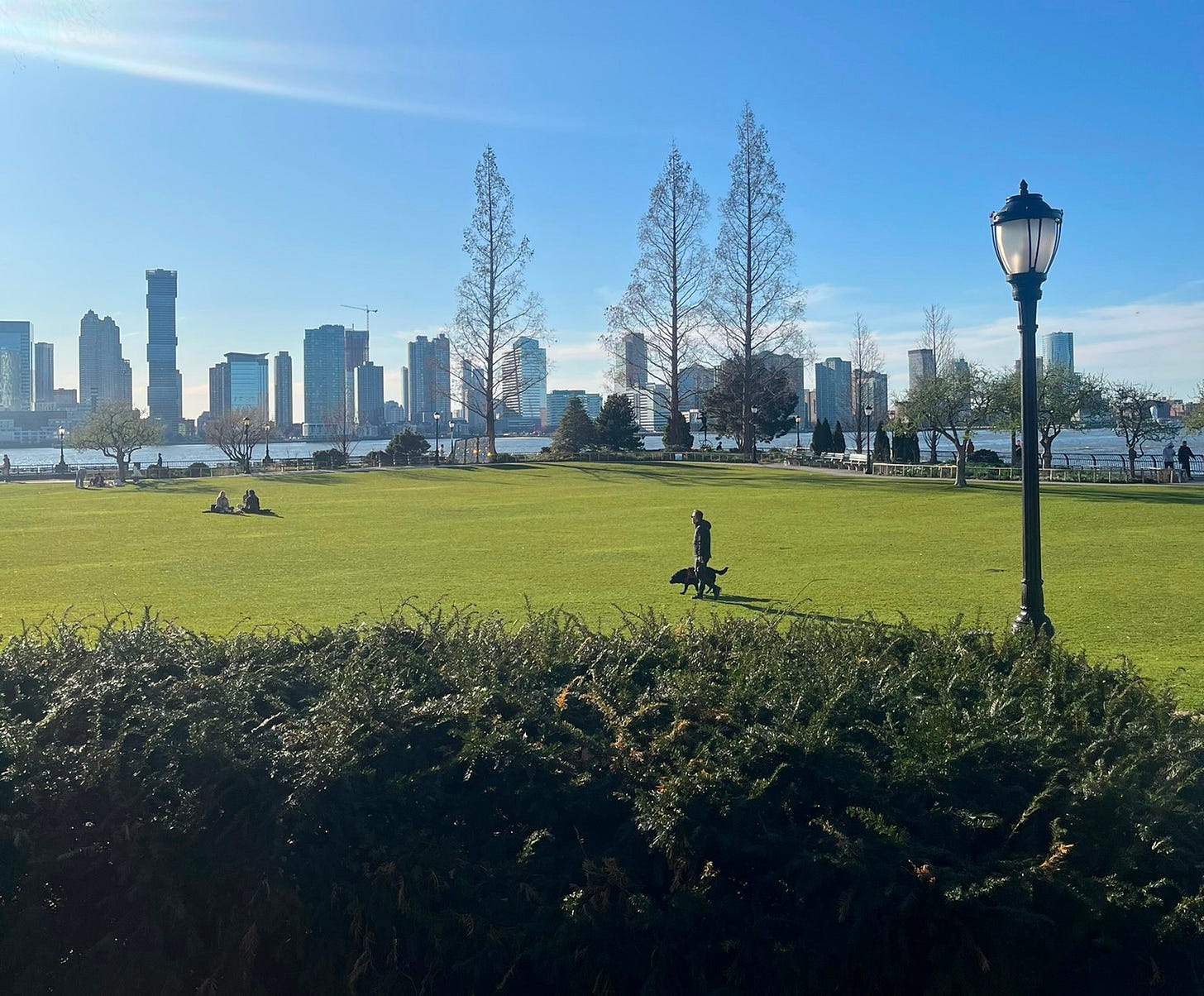
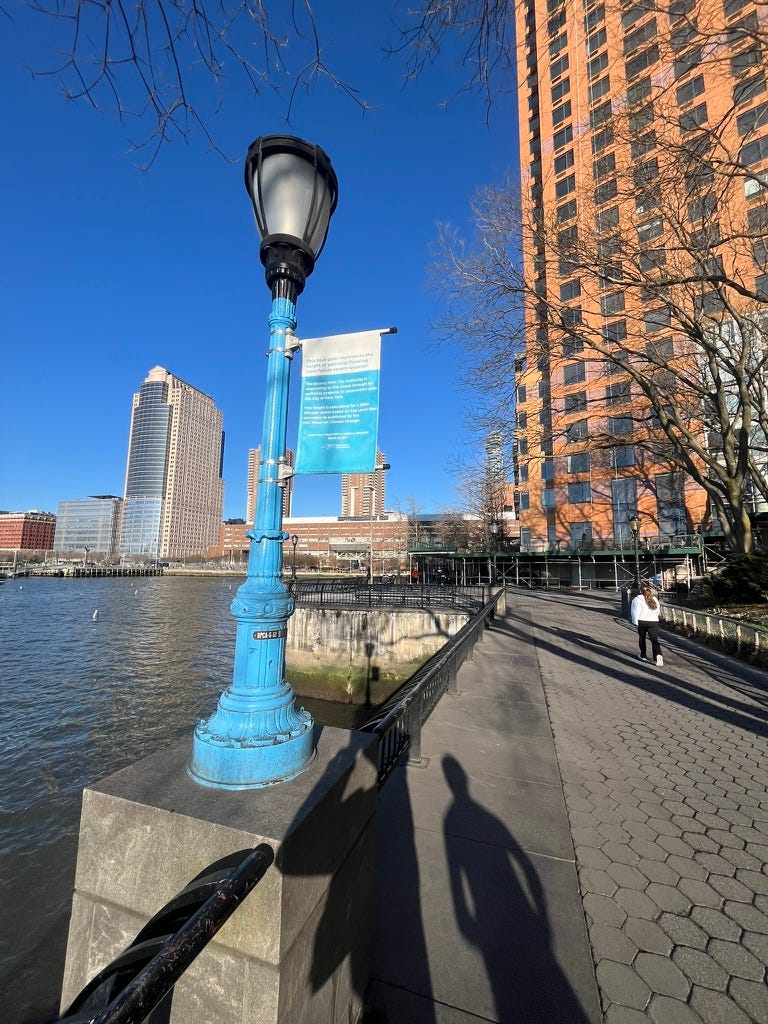

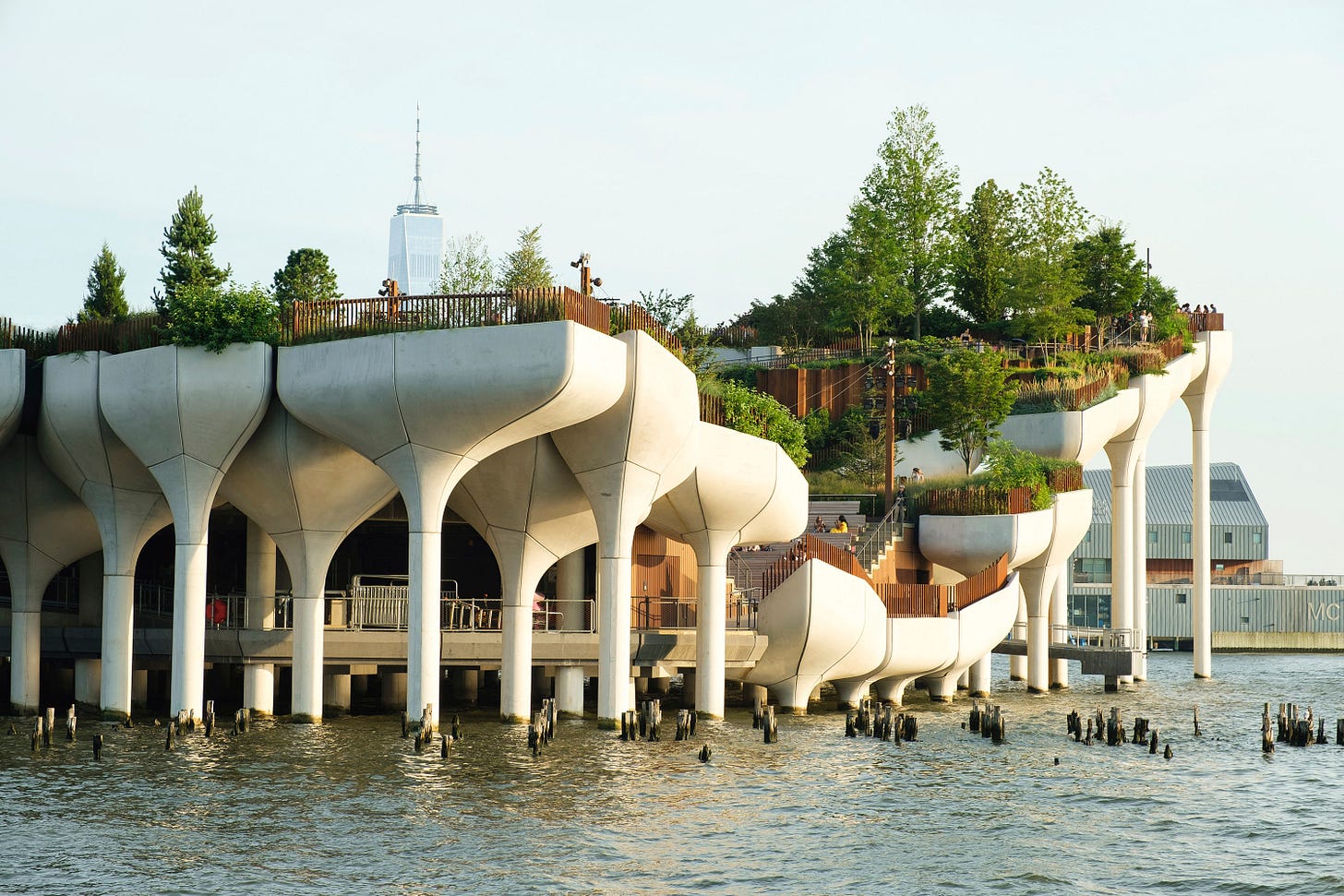
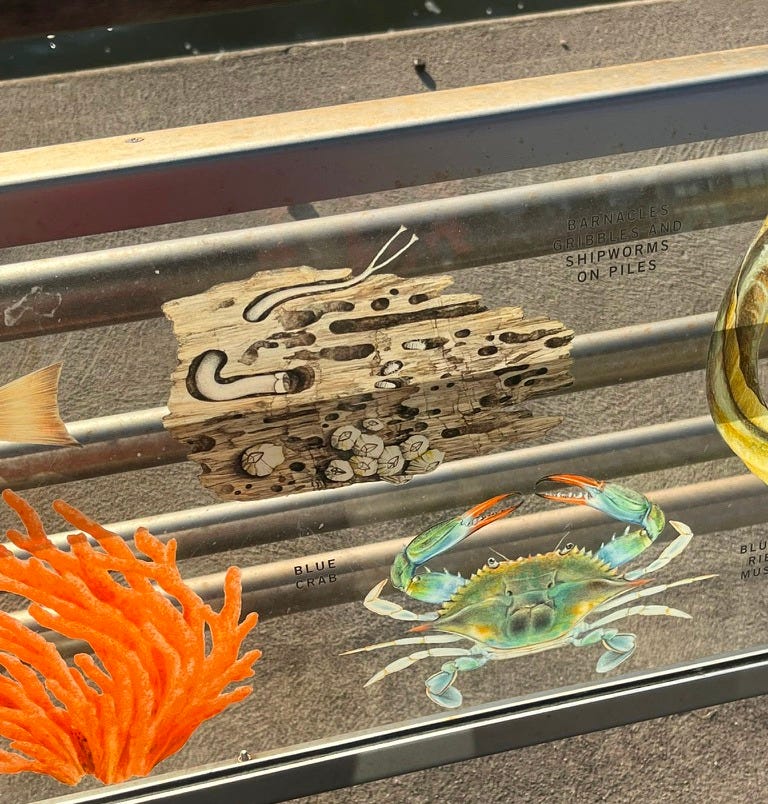
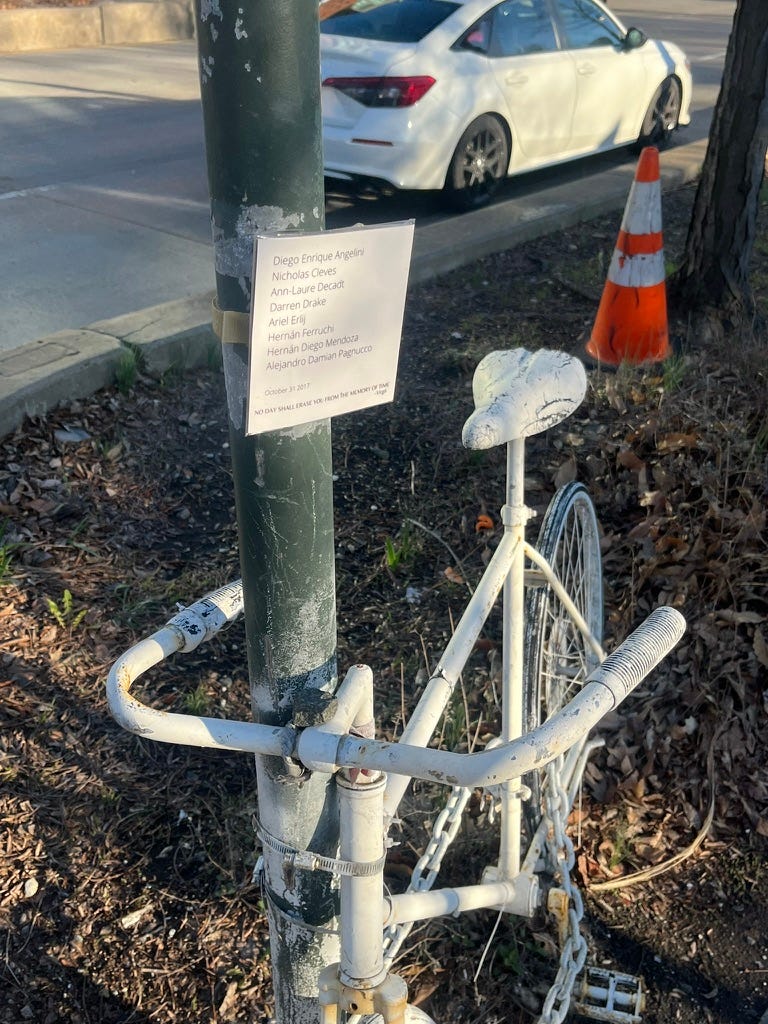

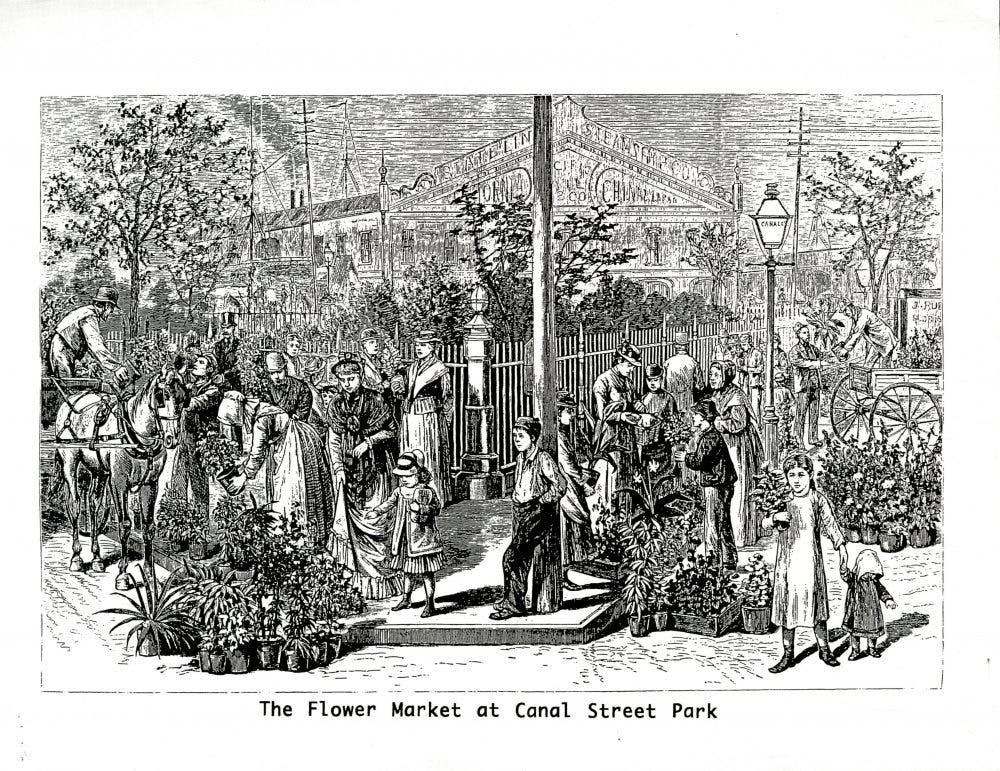
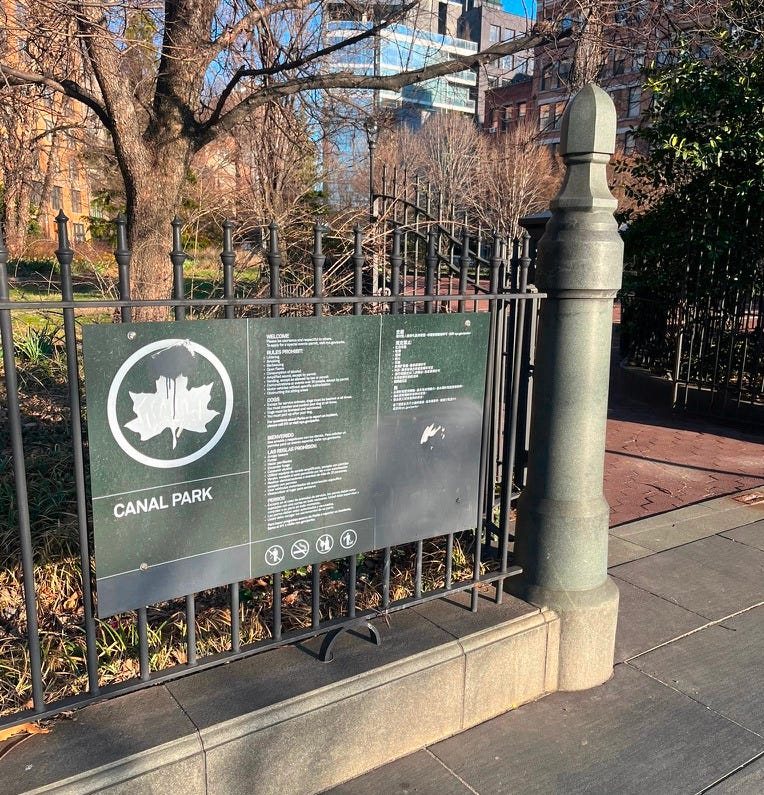

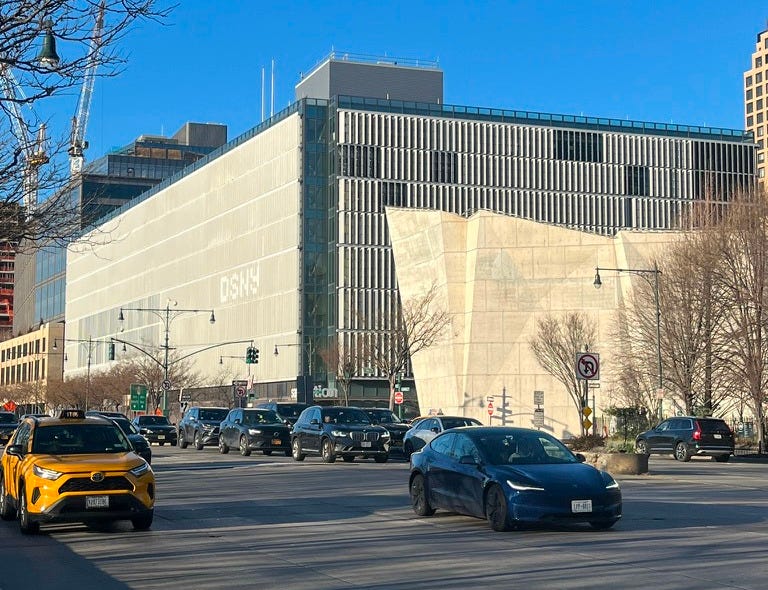
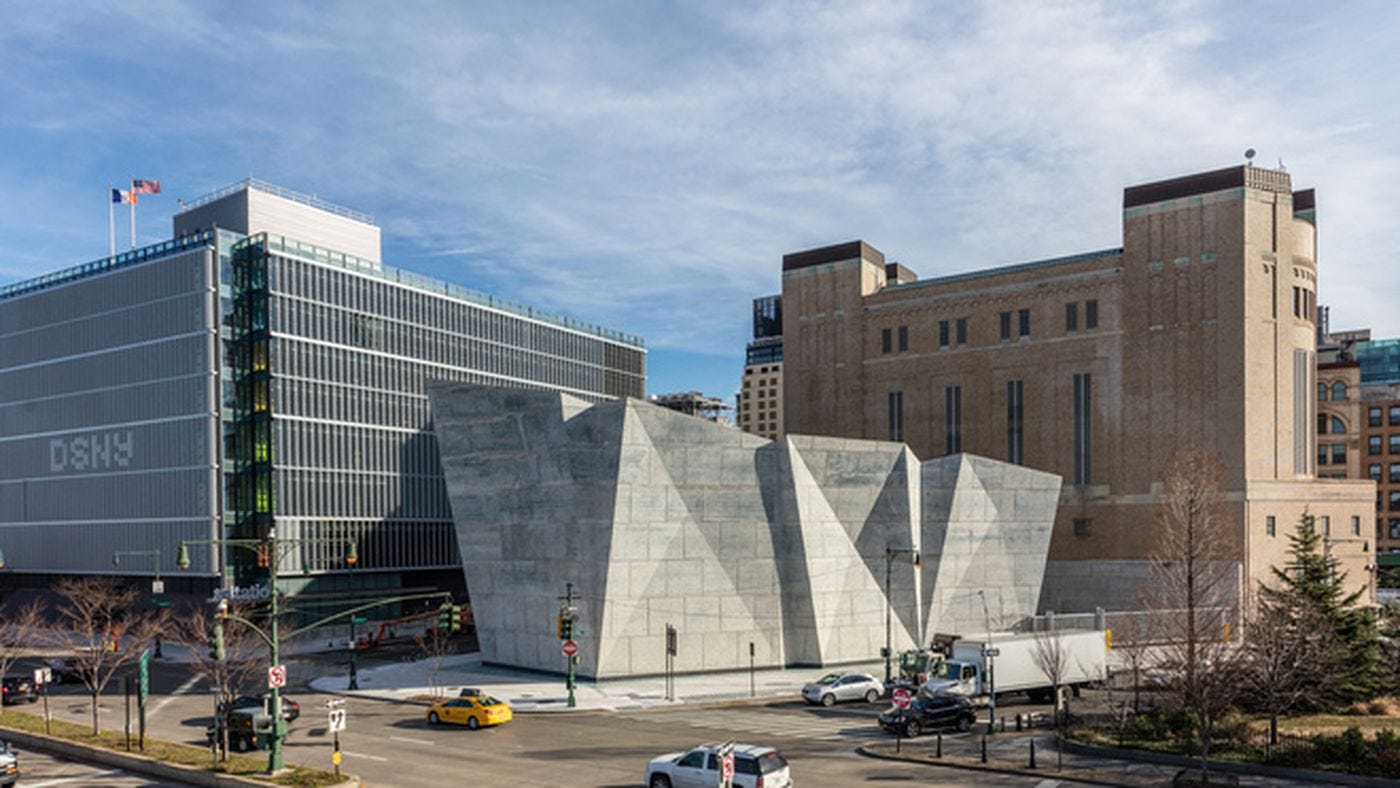


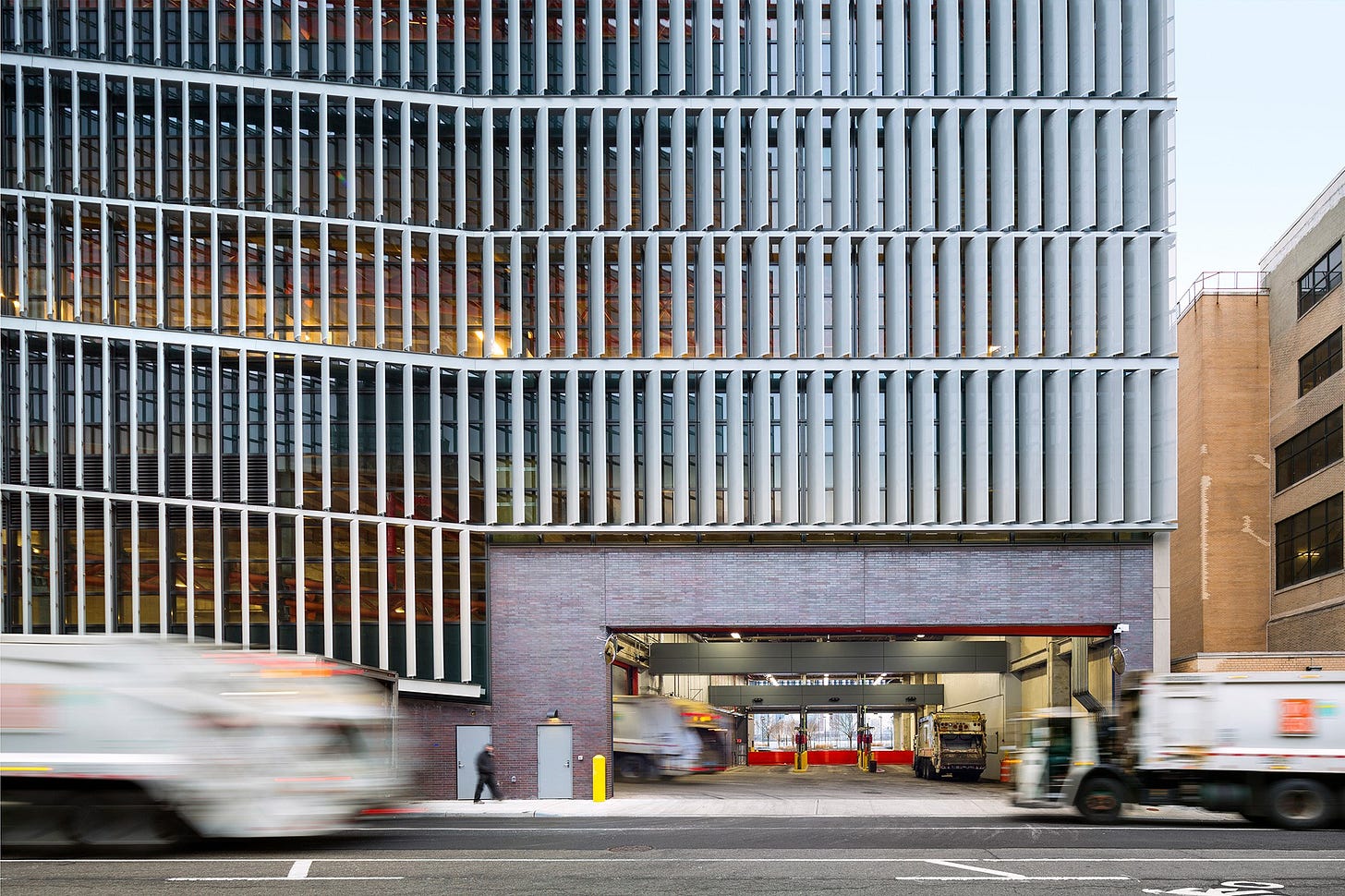

"It’s easy to forget how layered and dense the world is." This post is a perfect embodiment of this beautiful assertion: great photos and videos, hidden city gems (the carved model of 70 Pine!), playground animals (to know that Henry Stern called for animal decorations in all new parks!--a person after my own heart), even the pilings around Little Island (I never noticed!), and a flower market from times of yore. All in all, beautiful.
I spent a lot of time with that hippo